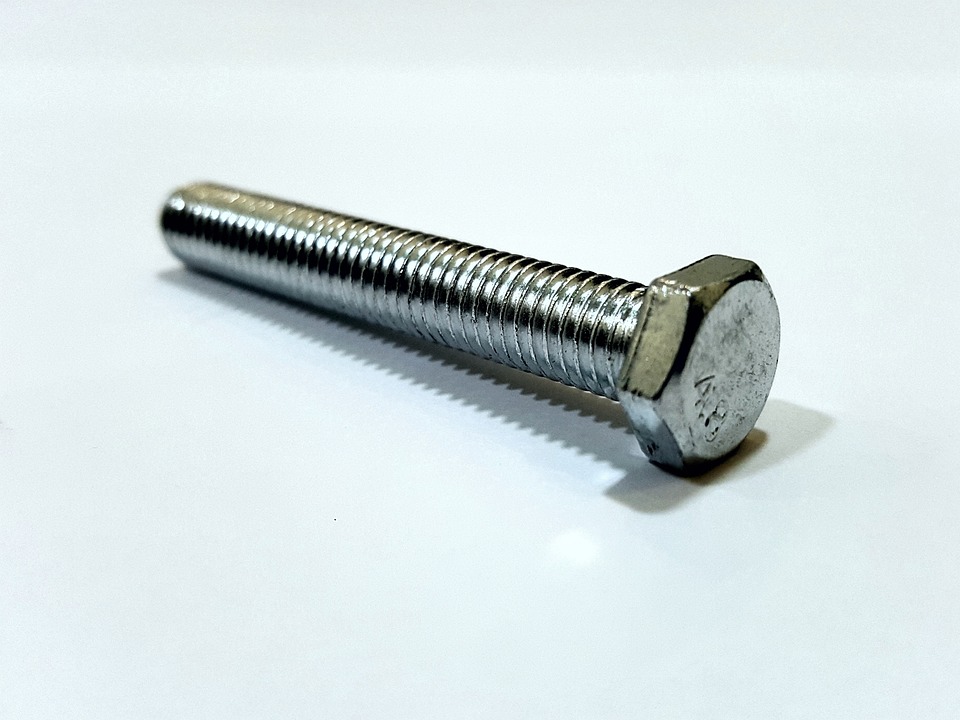How to Find Craft Beer Breweries in New Orleans
How to Find Craft Beer Breweries in New Orleans New Orleans is a city where culture, history, and flavor converge on every corner. While it’s globally celebrated for its jazz, Creole cuisine, and Mardi Gras parades, its craft beer scene has quietly evolved into one of the most vibrant and distinctive in the American South. Over the past decade, local brewers have embraced the city’s rich culinary
How to Find Craft Beer Breweries in New Orleans
New Orleans is a city where culture, history, and flavor converge on every corner. While it’s globally celebrated for its jazz, Creole cuisine, and Mardi Gras parades, its craft beer scene has quietly evolved into one of the most vibrant and distinctive in the American South. Over the past decade, local brewers have embraced the city’s rich culinary heritage—infusing bold spices, local fruits, and even second-line rhythms into their brews. From barrel-aged stouts aged in bourbon barrels to hazy IPAs brewed with Louisiana sugarcane syrup, New Orleans offers a beer experience unlike any other.
But for visitors and locals alike, navigating this growing landscape can be overwhelming. With new breweries opening regularly and others closing or relocating, knowing where to start—and how to find the best ones—is essential. This guide provides a comprehensive, step-by-step roadmap to discovering authentic, high-quality craft beer breweries in New Orleans. Whether you’re a seasoned beer enthusiast or a curious first-timer, this tutorial will equip you with the knowledge, tools, and strategies to explore the city’s beer culture with confidence and depth.
Step-by-Step Guide
1. Define Your Beer Preferences
Before you hit the streets of New Orleans, take a moment to reflect on what kind of beer you enjoy. Do you prefer hop-forward IPAs with citrus and pine notes? Or are you drawn to rich, dark stouts with chocolate and coffee undertones? Maybe you’re curious about sour ales, lagers, or experimental brews infused with local ingredients like filé powder, bayou honey, or prickly pear cactus.
Understanding your palate helps you filter options efficiently. Many New Orleans breweries specialize in certain styles. For example, some focus on Belgian-inspired ales, while others experiment with wild fermentation using native yeast strains. Knowing your preferences allows you to prioritize breweries that align with your tastes rather than wasting time visiting places that won’t satisfy your cravings.
2. Research Breweries Using Trusted Online Directories
Start your search with reliable, up-to-date online directories. The most effective tools include:
- RateBeer – Offers user reviews, ratings, and detailed brewery profiles.
- BeerAdvocate – Provides community-driven ratings and brewery maps.
- Untappd – A social app where users check in to beers they’ve tried, often with photos and tasting notes.
- Google Maps – Search “craft beer breweries near me” and filter by rating, distance, and recent reviews.
Use filters to narrow results. Sort by “Highest Rated,” “Recently Opened,” or “Most Reviewed.” Pay attention to the number of reviews—breweries with 50+ recent reviews are more likely to have consistent quality. Avoid places with fewer than 10 reviews unless they’re newly opened and promoted by local beer influencers.
3. Consult Local Beer Blogs and Podcasts
Local voices often provide insights that national platforms miss. Follow New Orleans-based beer bloggers and podcasters who regularly visit and review breweries. Examples include:
- The NOLA Beer Blog – Offers weekly updates on new releases, taproom events, and seasonal brews.
- Beer NOLA Podcast – Features interviews with brewers, behind-the-scenes tours, and tasting panels.
- Where Y’At Magazine – Publishes annual “Best of New Orleans” lists, including top breweries.
These sources often highlight hidden gems—breweries tucked into industrial corridors or historic buildings that don’t appear on mainstream maps. They also report on limited releases, taproom exclusives, and collaborations with local restaurants or distilleries, giving you access to beers you won’t find anywhere else.
4. Visit the New Orleans Beer Trail Website
The official New Orleans Beer Trail (nolabeertrail.com) is a curated, city-supported initiative designed to guide beer lovers through the region’s top breweries. The website features an interactive map, brewery profiles, and a digital passport system where you can collect stamps for visiting participating locations.
Each brewery on the trail has been vetted for quality, consistency, and community engagement. Completing the passport (visiting six or more breweries) earns you a limited-edition commemorative glass. The trail includes both well-known names like NOLA Brewing and emerging stars like Urban South Brewery and Parish Brewing Co.’s New Orleans taproom.
Bookmark the site and download the map for offline use. Many trail breweries offer discounts to passport holders, making this not just a guide but a cost-saving tool.
5. Use Social Media to Track Real-Time Updates
Breweries in New Orleans rely heavily on Instagram and Facebook to announce new beer releases, taproom hours, and special events. Follow your target breweries on these platforms. Look for:
- Post frequency – Active breweries post at least 2–3 times per week.
- Photos of taproom ambiance – Shows whether they prioritize customer experience.
- Stories with live updates – Indicates transparency and engagement.
Many breweries release limited batches exclusively via social media announcements. For example, a brewery might post at 8 a.m. that a new hazy IPA with passionfruit and habanero is available that afternoon—only 20 kegs, first come, first served. Without following them, you’ll miss these opportunities.
Join local Facebook groups like “New Orleans Craft Beer Lovers” or “Louisiana Beer Enthusiasts.” Members share tips, warn about closures, and organize group brewery tours. These communities are invaluable for last-minute intel.
6. Plan Your Route by Neighborhood
New Orleans is divided into distinct neighborhoods, each with its own beer character. Plan your visits by geographic cluster to maximize efficiency and minimize travel time:
- French Quarter & Warehouse District – Home to NOLA Brewing and Urban South Brewery. Easy walking distance; ideal for first-time visitors.
- Bywater & Marigny – The epicenter of experimental brewing. Visit Gnarly Barley, NOLA Craft Beer, and The Beer Garden.
- Mid-City & Gentilly – Known for community-focused taprooms. Check out Urban South’s original location and Bayou Teche Brewing’s satellite.
- Algiers Point – A quieter, scenic spot with The Gnarly Barley taproom and a view of the Mississippi.
Use Google Maps to plot your route. Group breweries within a 2–3 mile radius. Avoid spreading visits too thin—quality over quantity. Aim to visit 2–3 breweries per day, allowing time to savor each beer and chat with staff.
7. Visit During Off-Peak Hours
Weekend afternoons, especially Saturdays, are packed. Lines form outside popular taprooms, and staff are stretched thin. To get a better experience:
- Visit on weekdays—Tuesdays and Wednesdays are typically quietest.
- Go early—Arrive between 11 a.m. and 1 p.m. for the best selection and service.
- Avoid game days or major festivals—Breweries near the Superdome or Frenchmen Street get overwhelmed during events.
During quieter hours, brewers are more likely to engage in conversation, offer tasting flights, and share stories about their recipes. You might even get a sneak peek at an upcoming release.
8. Ask for Tasting Flights and Ask Questions
Most New Orleans breweries offer tasting flights—typically 4–6 small pours for $10–$18. Always choose a flight instead of ordering just one beer. It’s the most efficient way to sample a variety of styles and find your favorites.
Don’t hesitate to ask questions:
- “What’s the inspiration behind this beer?”
- “Is this brewed with local ingredients?”
- “Do you have any barrel-aged or sour options today?”
Brewers take pride in their creations. Many use Louisiana-specific ingredients like sugarcane molasses, wild blackberries from the Atchafalaya Basin, or coffee beans roasted in the French Quarter. Learning about these details enhances your appreciation and helps you identify breweries that truly embody the region.
9. Check for Food Pairings and On-Site Eats
Unlike traditional beer halls, many New Orleans breweries partner with local food trucks or have in-house kitchens serving Creole-inspired bites. Look for:
- Beignets paired with a crisp pilsner
- Shrimp po’boys with a hoppy IPA
- Dirty rice with a dark, roasted stout
Some breweries, like NOLA Brewing, even offer full menus with Cajun-spiced wings, crawfish étouffée, and vegan jambalaya. Food enhances the beer experience—and vice versa. A well-paired meal can elevate a good beer to extraordinary.
10. Document Your Journey
Take photos, note tasting impressions, and save receipts. Use a notebook or a digital app like Untappd to log each beer you try. Record:
- Brewery name
- Beer name and style
- ABV and IBU
- Flavor notes (e.g., “hints of chicory, caramelized banana, smoky oak”)
- Overall impression
This creates a personal beer journal that helps you remember what you liked—and what to avoid next time. It also becomes a valuable reference when recommending breweries to friends or planning future trips.
Best Practices
Respect the Craft and the Culture
New Orleans beer culture is deeply intertwined with the city’s identity. Breweries often collaborate with local artists, musicians, and chefs. Many label designs feature jazz motifs, Mardi Gras colors, or Creole architecture. When you visit, treat the space with respect—don’t litter, don’t be loud, and don’t treat the taproom like a party venue. This isn’t just a bar; it’s a cultural space.
Support Local, Not Just Popular
It’s tempting to stick with the most famous names, but some of the most memorable experiences come from smaller, lesser-known operations. Breweries like 2nd Line Brewing, Cigar City’s New Orleans outpost, or The Bearded Lady Brewing Company offer unique, intimate experiences. These places often have limited distribution, meaning you’ll only taste their beer on-site. Supporting them helps sustain the local ecosystem.
Buy Beer to Go—But Know the Rules
Most New Orleans breweries sell cans and growlers for take-home consumption. However, Louisiana law prohibits selling beer for off-premises consumption before 10 a.m. on weekdays and 11 a.m. on weekends. Always check posted hours. Also, note that some breweries limit how many cans you can buy per person—especially for limited releases.
When purchasing, ask if the beer is “conditioned” (bottle-conditioned) or “force-carbonated.” Conditioned beers often have better flavor complexity and age well. Store them upright in a cool, dark place.
Learn Basic Beer Terminology
Understanding terms like IBU (International Bitterness Units), ABV (Alcohol by Volume), SRM (Standard Reference Method for color), and “dry-hopped” helps you communicate better with brewers and make informed choices. A beer with 80+ IBU will be aggressively hoppy; one under 20 IBU will be smooth and mild. Knowing this prevents unpleasant surprises.
Stay Hydrated and Pace Yourself
Even sessionable beers (under 5% ABV) can add up. Drink water between samples. Many breweries offer complimentary water. Avoid drinking on an empty stomach—especially when trying high-ABV barrel-aged beers. Some New Orleans stouts exceed 10% alcohol. Enjoy them slowly, like fine whiskey.
Engage with Staff and Brewers
Brewers in New Orleans are passionate storytellers. They’ll often share how a beer was inspired by their grandmother’s gumbo recipe or a late-night jazz session. Ask about the brewing process, yeast strains, or water chemistry. These conversations transform a simple beer tasting into a cultural exchange.
Be Open to Experimentation
Don’t dismiss a beer because it sounds unusual. New Orleans is known for innovation: think beer brewed with chicory (a coffee substitute), beignets, or even local mushrooms. Some of the most acclaimed brews in the city started as “weird ideas.” Be adventurous. You might discover your new favorite.
Tools and Resources
Essential Apps
- Untappd – The most powerful tool for tracking, rating, and discovering beers. Its map feature shows nearby breweries with real-time availability.
- Google Maps – Use it to navigate, check hours, read reviews, and view photos of taprooms. Enable “Open Now” filter.
- BeerAdvocate – For in-depth ratings and brewery rankings. Great for comparing similar styles across multiple locations.
- Yelp – Useful for checking recent visitor photos and complaints about service or cleanliness.
Print and Digital Guides
- New Orleans Beer Trail Passport – Available at participating breweries or online. Collect stamps for rewards.
- Where Y’At Magazine’s Beer Guide – Annual print issue with maps, interviews, and top 10 lists.
- Beer & Brews of New Orleans (Book by David Kunz) – A comprehensive historical and cultural guide to the city’s brewing heritage.
Local Events and Festivals
Timing your visit around a beer festival can be a game-changer:
- NOLA Beer Week – Held annually in March. Features tap takeovers, brewery tours, and exclusive releases.
- Bayou Boogaloo – A music and food festival along the Bayou St. John with a dedicated beer garden.
- Creole Cream Ale Festival – Celebrates Louisiana’s signature beer style, brewed with local ingredients.
These events offer access to breweries you might not otherwise visit, plus the chance to meet multiple brewers in one day.
Online Communities
- Reddit: r/NewOrleans – Subreddit with frequent beer-related threads and recommendations.
- Facebook Groups – “New Orleans Craft Beer Lovers,” “Louisiana Homebrewers,” and “Beer Hunters NOLA.”
- Instagram Hashtags – Search
NOLACraftBeer, #NewOrleansBeer, #NOLABeerTrail for real-time content.
Transportation Tips
Many breweries are not within walking distance of each other. Plan your transportation:
- Use rideshare apps (Uber/Lyft) – Most convenient and safest option.
- Take the streetcar – The St. Charles line passes near several breweries.
- Rent a bike – New Orleans has bike lanes along the river and through the Bywater.
- Join a guided tour – Companies like NOLA Beer Tours offer curated itineraries with transportation.
Never drink and drive. Even if you’re only sampling small pours, alcohol affects everyone differently.
Real Examples
Example 1: NOLA Brewing Company
Founded in 2011, NOLA Brewing is one of the city’s most established craft breweries. Located in the Warehouse District, it’s housed in a converted 1920s warehouse with exposed brick and giant fermenters visible through glass walls.
Must-try beers:
- Brut IPA – Dry, crisp, with notes of green apple and chamomile. A local favorite.
- King Cake Ale – A seasonal brew released in January, brewed with cinnamon, sugar, and cream cheese extract.
- Bayou Bitter – A Louisiana twist on the American pale ale, featuring local Cascade hops.
They offer a 6-taste flight for $14 and serve Cajun shrimp tacos on weekends. Their taproom is open daily from 11 a.m. to 10 p.m. and often features live jazz on Friday nights.
Example 2: Urban South Brewery
Urban South, originally from Baton Rouge, opened its New Orleans taproom in 2019 and quickly became a neighborhood staple. Known for approachable, well-balanced beers with clever names.
Standouts:
- Shrimp Boat IPA – Hazy, tropical, with hints of tangerine and guava. Brewed with Louisiana-grown hops.
- Coastal Lager – A crisp, clean lager with a subtle salt finish, inspired by Gulf Coast breezes.
- BeauSoleil Saison – A farmhouse ale with orange peel and coriander, perfect for warm afternoons.
The taproom features a large outdoor patio, board games, and a rotating food truck lineup. They release a new “Neighborhood Series” beer every month, each named after a local street or landmark.
Example 3: Gnarly Barley Brewing Co.
Tucked into a quiet corner of the Bywater, Gnarly Barley is a small, family-run operation known for bold, experimental brews. No signage. Just a modest door with a chalkboard listing today’s taps.
Recent releases:
- Prickly Pear Sour – Made with wild cactus fruit harvested from the Louisiana coast. Tart, floral, and refreshing.
- Second Line Stout – Brewed with chicory root and dark molasses. Tastes like a liquid jazz parade.
- Bayou Honey IPA – Uses honey from bees raised near the Atchafalaya Swamp.
Owner John Leger often pours beers himself and tells stories about each recipe. No food is served, but patrons are welcome to bring in food from nearby restaurants. It’s a true hidden gem—only discovered by those who ask locals for directions.
Example 4: Parish Brewing Co. (New Orleans Taproom)
While Parish is based in Broussard, Louisiana, its New Orleans taproom—opened in 2022—has become a must-visit. The space is sleek, modern, and designed to reflect the city’s architectural heritage.
Notable brews:
- Coon Dog Daddy IPA – A bold, resinous IPA with citrus and pine notes. Consistently rated among the top 10 IPAs in the South.
- Parish Pilsner – Crisp, clean, and perfectly balanced. A go-to for beer purists.
- Wet Hop Ale – Brewed with fresh, undried hops harvested in October. Only available for a few weeks each year.
They offer a “Brewer’s Table” experience—reservations required—where you get a 10-beer tasting paired with small bites designed by a local chef. It’s a premium experience worth the wait.
FAQs
What’s the best time of year to visit craft breweries in New Orleans?
Spring (March–May) and fall (September–November) are ideal. Weather is pleasant, and many breweries release seasonal brews tied to local harvests. Avoid summer months if you’re sensitive to heat and humidity—taprooms can get stuffy. Mardi Gras season (January–February) is fun but crowded.
Are there any breweries that allow outside food?
Yes. Many smaller taprooms, like Gnarly Barley and The Beer Garden, welcome outside food. Larger breweries like NOLA Brewing and Urban South have in-house kitchens, but you can usually bring in dessert or snacks. Always ask first.
Do I need to make reservations?
Most taprooms operate on a first-come, first-served basis. However, if you want to join a guided tour, attend a beer dinner, or book the “Brewer’s Table” experience, reservations are required. Book at least 48 hours in advance.
Are there gluten-free or vegan beer options?
Yes. Many breweries now offer gluten-reduced or gluten-free beers made with sorghum, millet, or buckwheat. Vegan options are common—most craft beer is naturally vegan, but some use isinglass (fish-derived) for fining. Ask staff if the beer is vegan-friendly.
Can I bring kids to breweries?
Most taprooms are family-friendly during daytime hours. Many have high chairs, coloring books, and non-alcoholic options like root beer or kombucha. However, some venues restrict children after 6 p.m. or on weekends. Check individual brewery policies.
How much should I budget for a brewery visit?
Plan for $15–$25 per person for a tasting flight. Cans cost $8–$12 each. Food ranges from $10–$18. If you’re buying to-go, add $20–$40 for a 6-pack. Total for a full day: $50–$100 per person, depending on choices.
What should I wear?
Dress comfortably. New Orleans is casual. Shorts, t-shirts, and sandals are fine. Bring a light jacket for evening air near the river. Avoid flip-flops if you plan to walk between breweries—some streets are uneven.
Are brewery tours available?
Yes. NOLA Brewing, Urban South, and Parish offer 45-minute guided tours for $10–$15. These include a tasting and behind-the-scenes access to the brewhouse. Book online in advance.
Can I ship beer home from New Orleans?
Yes, but only if the brewery offers shipping. Louisiana law restricts direct-to-consumer shipping. Most breweries ship only to states that allow it. Always check their website or ask before purchasing.
What if a brewery is closed?
Breweries sometimes close for equipment maintenance, staff training, or private events. Always check their Instagram or Facebook page for updates. If they’re closed, ask staff for recommendations for nearby alternatives.
Conclusion
Finding craft beer breweries in New Orleans isn’t just about locating the nearest taproom—it’s about immersing yourself in a living, breathing culture that blends tradition with innovation. Each brewery tells a story: of Louisiana’s soil, its rivers, its music, and its people. The best way to discover them is not through a checklist, but through curiosity, connection, and a willingness to try something new.
Use the tools outlined in this guide—online directories, local blogs, social media, and the official Beer Trail—to plan your journey. But don’t let planning replace spontaneity. Some of the best beers are found by following a local’s recommendation, stumbling upon a quiet corner taproom, or asking the brewer, “What are you most proud of right now?”
Whether you’re sipping a crisp lager on a shaded patio in the Bywater or tasting a barrel-aged stout infused with chicory in a converted warehouse downtown, you’re not just drinking beer—you’re experiencing the soul of New Orleans.
So grab your passport, download your maps, and set out with an open mind. The next great beer is waiting—not in a brochure, but on the next tap, the next table, the next corner.




















